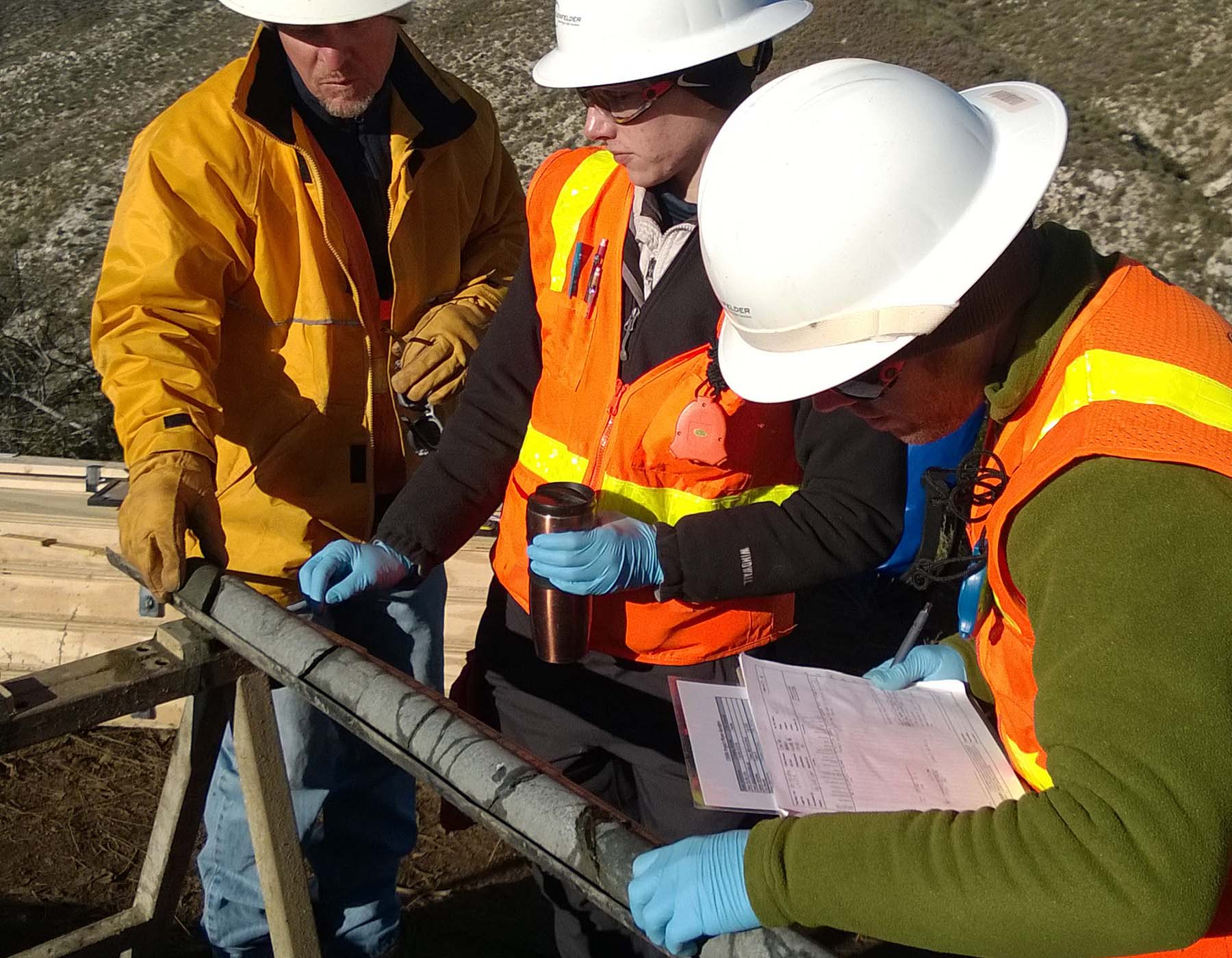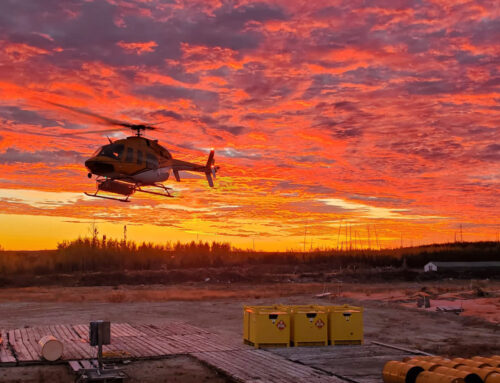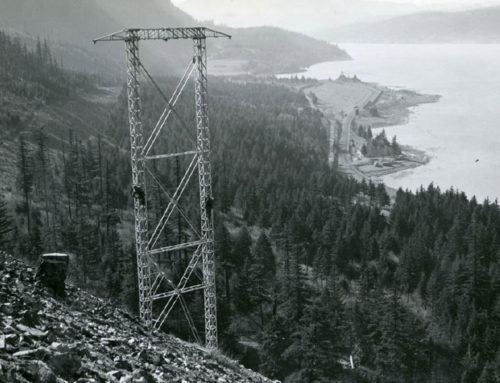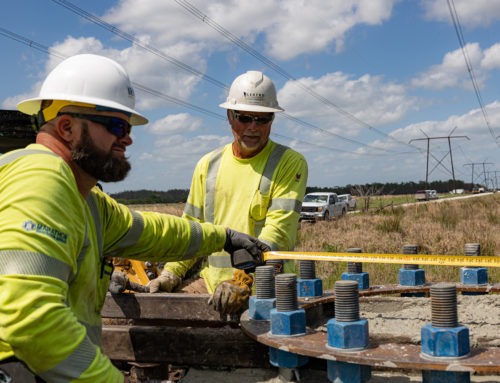Crux Subsurface undertakes innovative geotechnical coring for future California bullet train project
The California High-Speed Rail is planned to be to be the first high-speed rail system in the US, spanning over 800 miles (1,288km) across the state.

Crux crew drills on-site
Team Members
Kleinfelder
Crux Subsurface, Inc.
Angeles National Forest
California High-Speed Rail Authority
United States Forest Service (USFS)
Background
The rail system will connect the major metropolitan regions of San Francisco and Los Angeles via California’s Central Valley, transporting passengers at speeds over 200mph (322kmh) and offering decreasing travel times.
The Palmdale-to-Burbank project section includes proposed route alternatives that tunnel at a depth of up to 2,500ft (762m) through the geologically complex San Gabriel Mountains, located within the Angeles National Forest. The tunnel routes would replace earlier plans that largely detoured around the San Gabriel Mountains and reduce the line by up to 10 miles.
Available geotechnical informa-tion for the proposed tunnel alignments was limited, but indicated potential faults and rock shearing, leading the California High-Speed Rail Authority to commission an in-depth feasibility study.
Working alongside engineering and construction consulting company Kleinfelder, specialty contractor Crux Subsurface (Crux) was selected to provide geotechnical exploration services, collecting over 8,400ft of rock core within the Angeles National Forest for engineering analysis.
All of Crux’s drills met the California Air Resources Board’s emission reduction standards, further contributing to reduced environmental effects within the National Forest.
Sensitive Environment
All work completed within the Angeles National Forest was subject to strict federal permit regulations, and the California High-Speed Rail Authority worked closely with the United States Forest Service (USFS) and its partners to satisfy permit requirements.
Conventional access to boring locations had to be achieved using existing Forest Service roads, as the environmentally sensitive area did not permit construction of new roads and limited clearing of vegetation. During project operations, it was determined that this did not allow efficient access to drill sites, and helicopters were introduced as a low-impact and time-saving solution for crew and rock core transport. Upon accessing drill sites, compact and componentised equipment was used that allowed for a minimized area of disturbance. All of Crux’s drills met the California Air Resources Board’s emission reduction standards, further contributing to reduced environmental effects within the National Forest. The USFS required all fluid be maintained and recirculated over the course of the project, requiring an in-depth protection plan. Crux developed a water-loss system that allowed crews to monitor and identify water loss while drilling, and raise the circulation to desired levels as needed. An approved substance control and emergency response plan was also prepared should any leakage occur, but was never utilised due to the successful implementation of the water-loss system.
Crux developed a water-loss system that allowed crews to monitor and identify water loss while drilling,
Drilling Deep
The proposed tunnel alignments cross geologically complex conditions, requiring a detailed investigation and instrumentation plan. The potentially active San Gabriel Fault is part of the larger San Andreas Fault system, and borings had to be drilled at inclined angles to intersect and gather information about the dominant fault traces and associated groundwater. Extensive testing was performed in each boring, including packer testing, groundwater sampling, and hydraulic jacking at pressures as high as 10,000psi (69MPa) for in-situ rock-stress measurements. Additional geophysical testing was performed, measuring in-situ fracture systems and conductivity properties of the surrounding ground. In total, Crux drilled five borings to depths ranging from 900ft to 2,700ft. To measure groundwater pressures and their potential effect on tunnel design, construction and lining performance, vibrating wire piezometers were installed and tailored to the rock conditions. As anticipated, faults were encountered in multiple borings. The combination of weakened ground near the faults and the depth of the boreholes made it difficult to use typical installation methods. To mediate this, Crux developed an installation solution that bundled piezometers and tremie pipes into a grouting shoe at preselected depths. The grouting shoe was then lowered to its final depth using a sacrificial wireline. Implementing this system allowed for successful piezometer installation in deep borings under very challenging subsurface conditions.
In total, Crux drilled five borings to depths ranging from 900ft to 2,700ft.
Fire Mitigation
The Angeles National Forest is subject to reoccurring forest fires, and part of the drilling programme was scheduled to take place during peak fire season. All project staff underwent detailed training and mitigation courses related to exposure and emergency evacuation. The project experienced a handful of wildland fire warnings, and one active fire within extremely close proximity to a drill site. Crews were evacuated according to procedure and, upon return, reviewed fire safety and evacuation plans to ensure all project protocols were efficient and effective.
Speeding Forward
Completing multiple deep cores within a federally protected area required innovative techniques to minimise effects and maximise efficiency. All drilling and instrumentation was successfully completed and will assist in determining the feasibility of the rail tunnelling through the San Gabriel Mountains. The Palmdale-to-Burbank project section is part of phase one of the high-speed rail system, which will connect San Francisco to the Los Angeles Basin. Construction on this phase began in 2015 and is expected to wrap up by 2029, with more than 119 miles under construction to date. The rail system will eventually extend to Sacramento and San Diego, totalling 800 miles and as many as 24 stations, providing an efficient and economic option for California travellers.
The Palmdale-to-Burbank project section is part of phase one of the high-speed rail system, which will connect San Francisco to the Los Angeles Basin.
Technical paper published by GeoDrilling International, October 2017 DOWNLOAD




